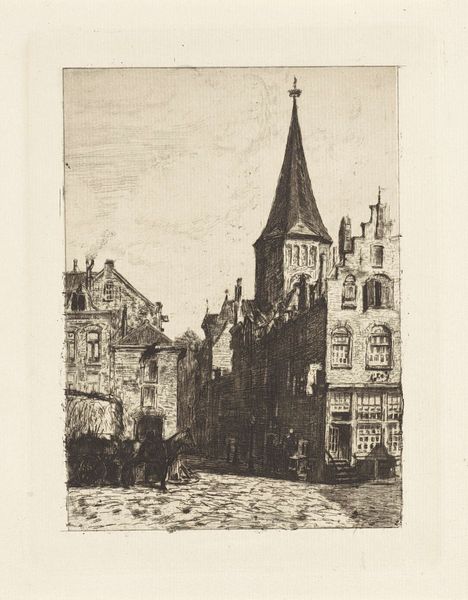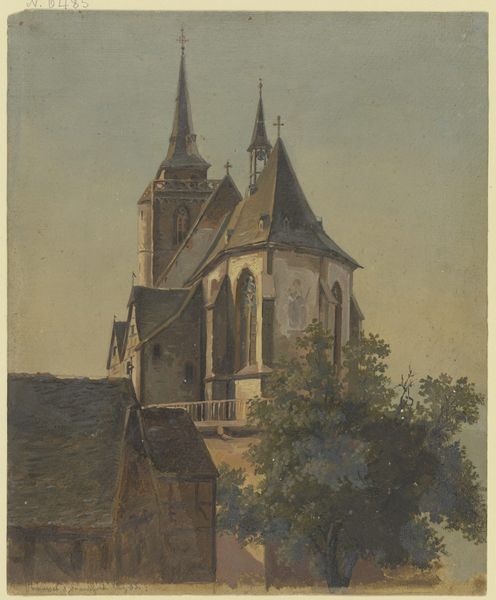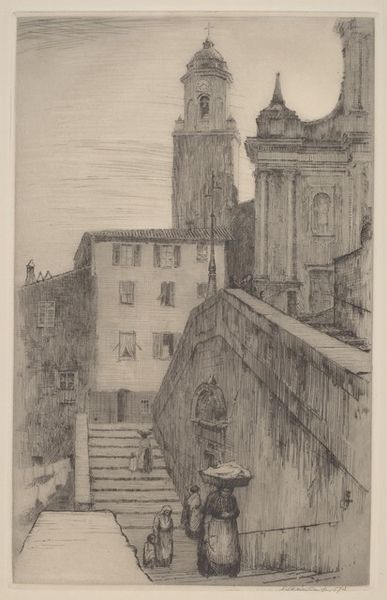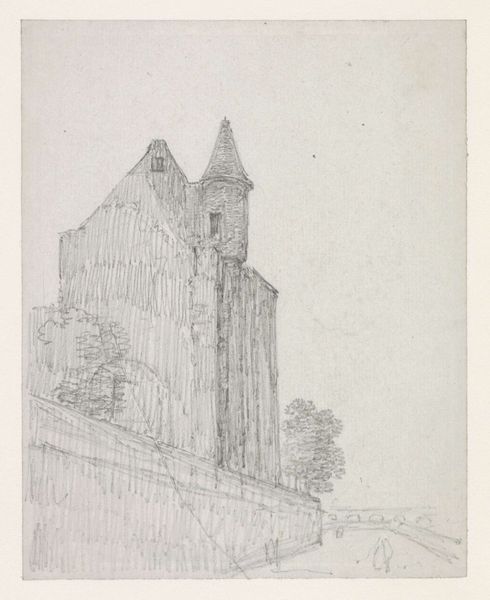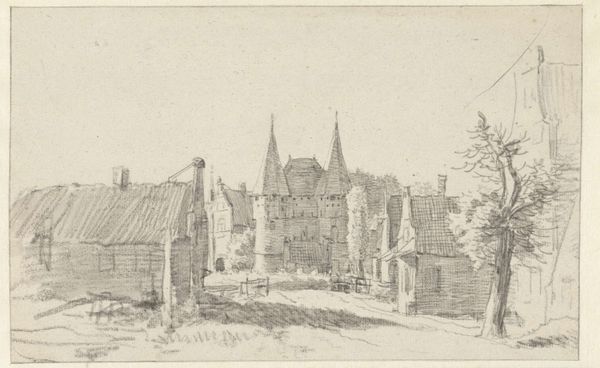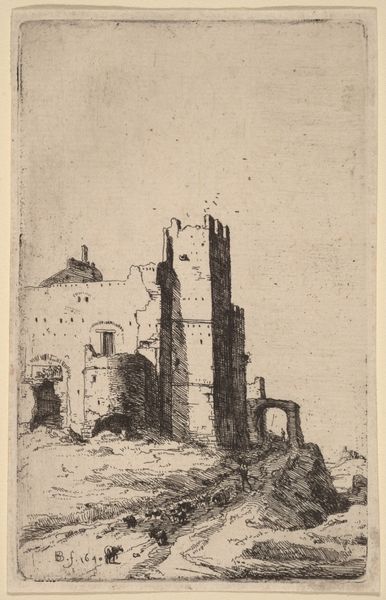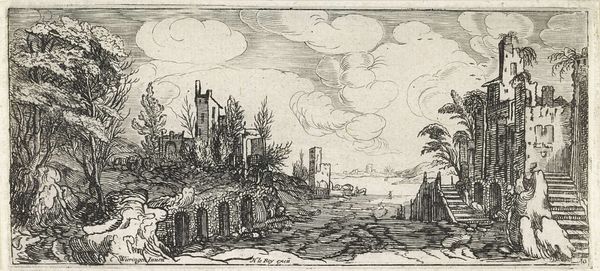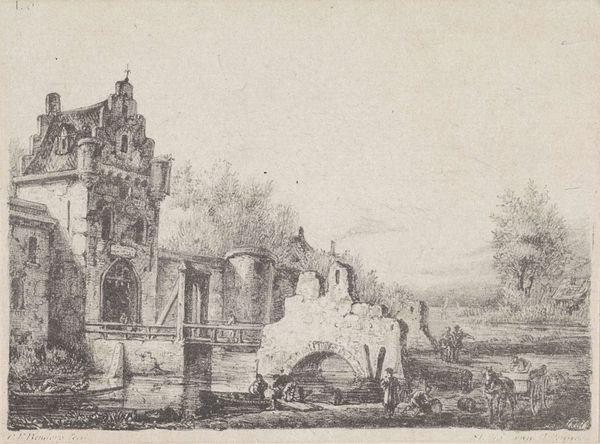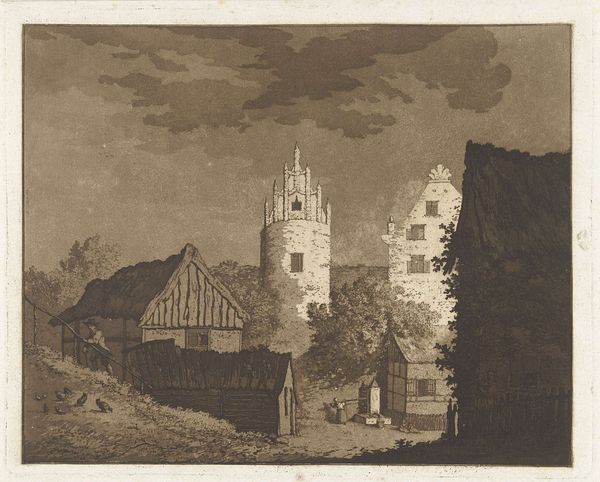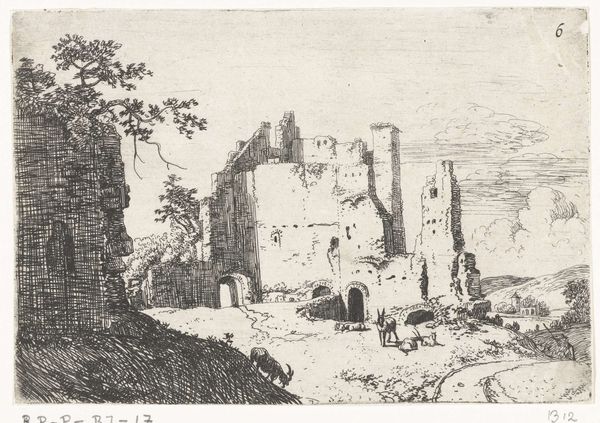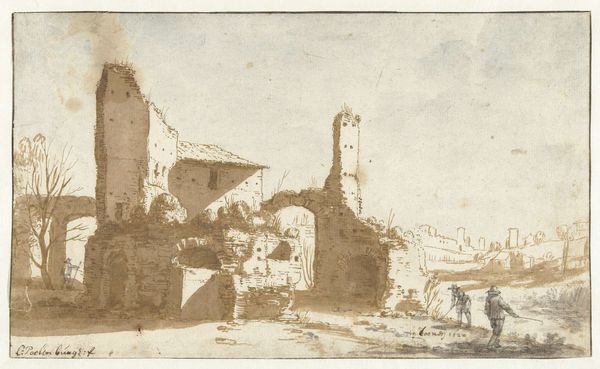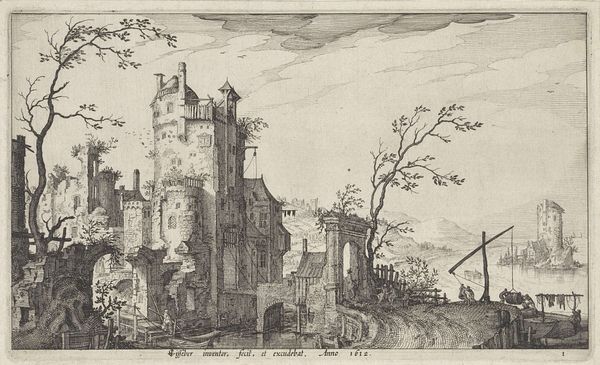
Jimieges 1831
0:00
0:00
jeanbaptistecamillecorot
Smith College Museum of Art (SCMA), Northampton, MA, US
painting, oil-paint, architecture
#
painting
#
oil-paint
#
landscape
#
oil painting
#
romanticism
#
cityscape
#
history-painting
#
architecture
#
realism
Copyright: Public domain
Editor: This is “Jimieges,” painted by Camille Corot in 1831. The medium is oil paint, and at first glance, the scene has a somewhat melancholic atmosphere with those architectural ruins set against a deep blue sky. What's your interpretation of this work, especially in its historical context? Curator: Corot’s "Jimieges" speaks volumes about the changing role of art in the 19th century. We see ruins, yes, but ruins carefully rendered in a manner that's less about romantic grandiosity and more about an objective study of form and light. Consider the shift in patronage; Corot, like many artists of his time, increasingly relied on the bourgeoisie. What kind of imagery would appeal to them, as opposed to the aristocracy that preceded them? Editor: So, less grandiosity, more…realism? Was there a growing interest in depicting contemporary society, perhaps even a touch of historical preservation, rather than idealizing the past? Curator: Exactly. This interest directly influenced the art market. People wanted images that reflected their world, but with a certain refinement. It's also worth noting the increasing institutionalization of art. Museums were gaining importance; artists needed to cater to both private and public tastes, and therefore address their history as an asset. Think of this work as an early form of "heritage tourism" through paint. Editor: Interesting! The architecture certainly has that feeling of both monumentality and decay, but also accessibility through that open space in the foreground. I’m also curious about how paintings like this may have impacted political discussions surrounding heritage at that time. Curator: Precisely. Artists like Corot shaped public perception of the past. This romantic ruin became an accessible and understandable artifact of its age through paint. It’s important to remember that what seems like a neutral landscape is often loaded with cultural and political implications. Editor: I never would have thought about it that way without considering how socio-political contexts and institutions helped inform and change these pieces of work. Thank you for the insights!
Comments
No comments
Be the first to comment and join the conversation on the ultimate creative platform.

